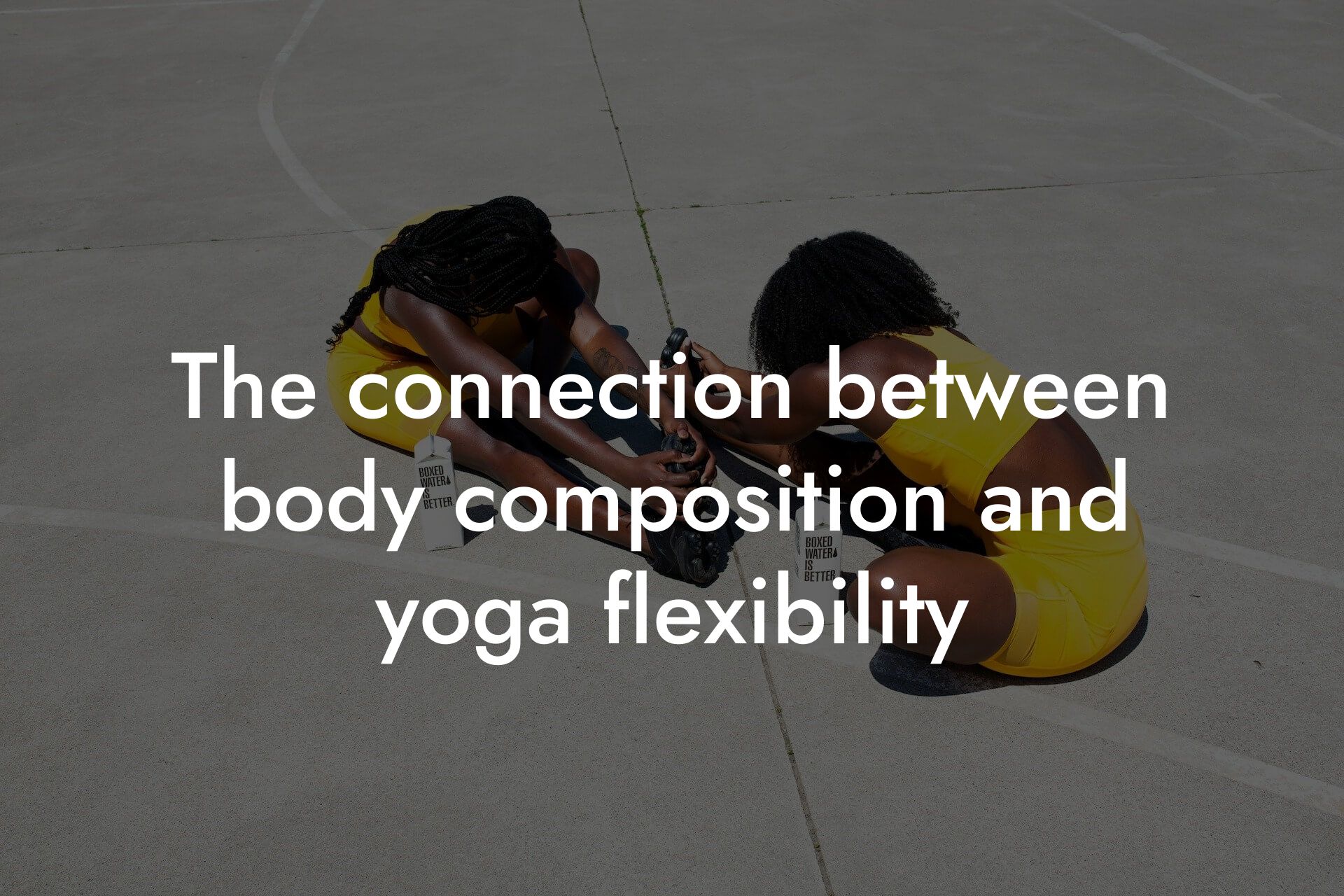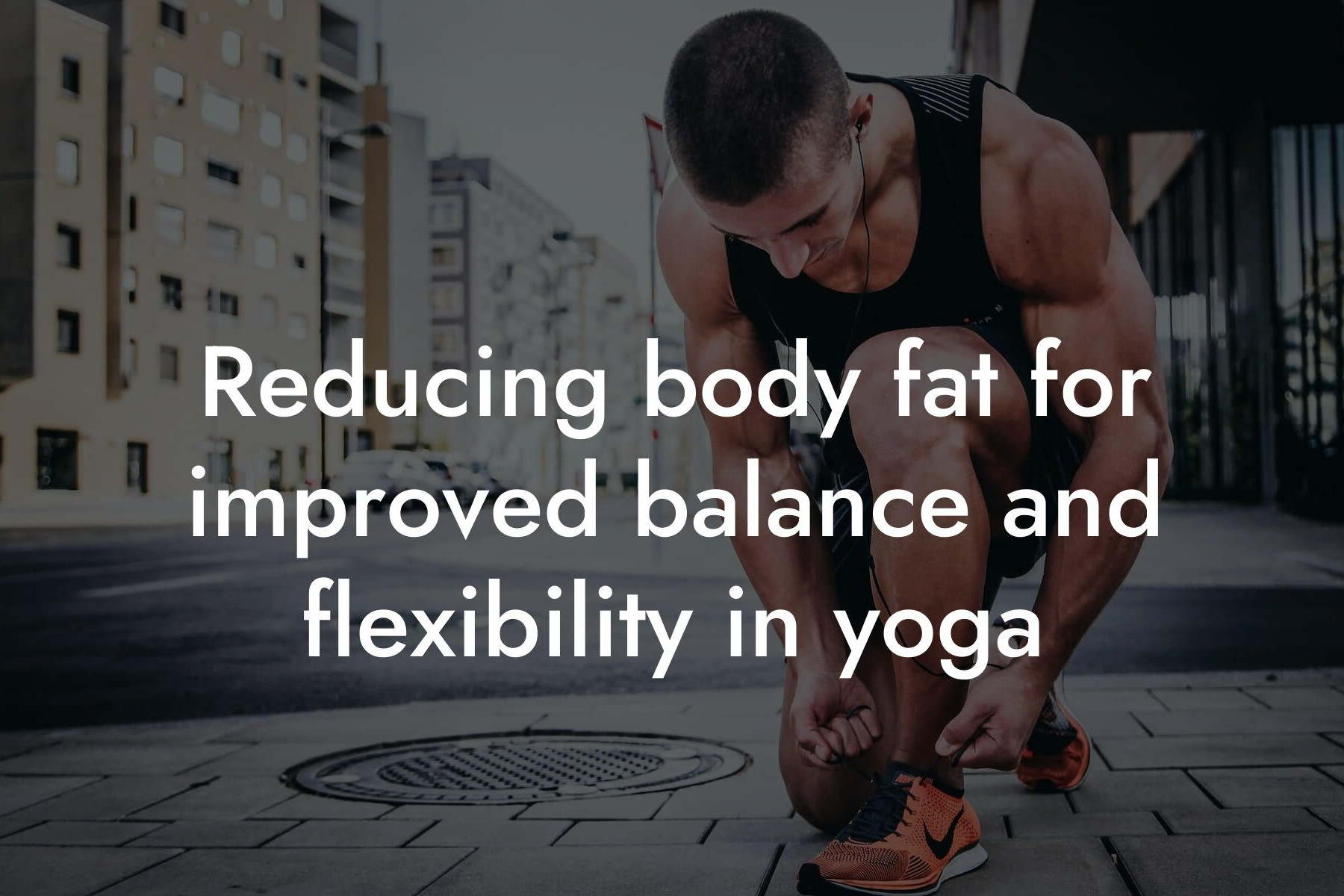As a high-earning professional, taking care of your physical appearance and overall health is crucial to maintaining a competitive edge in your industry. At Tano Performance Group, we understand the importance of prioritizing your body's needs, especially after intense yoga sessions. In this article, we'll delve into the essential recovery techniques for yogis, providing you with a comprehensive guide to help you bounce back stronger and more resilient than ever.
Table of Contents
- Understanding the Importance of Recovery in Yoga
- The Science Behind Muscle Soreness and Fatigue
- Stretching and Foam Rolling: The Ultimate Recovery Duo
- The Power of Self-Myofascial Release
- Hydration and Nutrition: The Recovery Fuel
- Rest and Relaxation: The Ultimate Recovery Tool
- Compression Garments and Ice Baths: The Recovery Boost
- Active Recovery: The Gentle Approach
- Conclusion: A Holistic Approach to Recovery
- Frequently Asked Questions
Understanding the Importance of Recovery in Yoga
Yoga is a physically demanding activity that can push your body to its limits, especially if you're new to the practice or have been intensifying your sessions. While yoga offers numerous benefits, including increased flexibility, strength, and mental clarity, it can also lead to muscle fatigue, soreness, and even injury if not properly recovered from. Recovery is a critical component of any exercise routine, and yoga is no exception. By incorporating recovery techniques into your post-practice routine, you can reduce muscle soreness, improve flexibility, and enhance overall performance.
The Science Behind Muscle Soreness and Fatigue
When you engage in intense yoga sessions, you're causing micro-tears in your muscles. This leads to inflammation, which can cause muscle soreness and fatigue. The delayed onset of muscle soreness (DOMS) typically sets in 24-48 hours after exercise and can last for several days. During this time, your body is working to repair and rebuild muscle tissue, which requires adequate rest, nutrition, and recovery strategies. Understanding the science behind muscle soreness and fatigue is crucial in developing an effective recovery plan.
Stretching and Foam Rolling: The Ultimate Recovery Duo
Stretching and foam rolling are two of the most effective recovery techniques for yogis. Static stretching, in particular, helps to lengthen muscle fibers, reduce muscle tension, and improve flexibility. Focus on stretching the major muscle groups, including your hamstrings, quadriceps, hip flexors, and lower back. Foam rolling, on the other hand, helps to break down adhesions and scar tissue, promoting blood flow and reducing muscle soreness. Spend 10-15 minutes post-practice stretching and foam rolling to reap the benefits.
The Power of Self-Myofascial Release
Self-myofascial release (SMR) is a technique that involves applying gentle pressure to specific areas of the body to release tension in the fascia, the connective tissue surrounding muscles. Using tools like lacrosse balls, tennis balls, or even your own body weight, SMR helps to reduce muscle knots, improve circulation, and promote relaxation. Focus on areas like your IT band, calves, and glutes, which tend to be particularly tight after intense yoga sessions.
Hydration and Nutrition: The Recovery Fuel
Adequate hydration and nutrition are essential for recovery. After an intense yoga session, your body needs to replenish lost electrolytes, carbohydrates, and protein to repair and rebuild muscle tissue. Aim to drink at least 16-20 ounces of water or a sports drink within 30 minutes of your practice. Additionally, consume a balanced meal or snack that includes complex carbohydrates, lean protein, and healthy fats within 60-90 minutes of your practice. Examples include a banana with almond butter, a protein smoothie, or a grilled chicken breast with quinoa and avocado.
Rest and Relaxation: The Ultimate Recovery Tool
Rest and relaxation are often overlooked but are critical components of the recovery process. After an intense yoga session, your body needs time to recover and rebuild. Aim for 7-9 hours of sleep each night and prioritize relaxation techniques like meditation, deep breathing, or yoga Nidra to reduce stress and promote relaxation. Additionally, take rest days as needed, and avoid intense exercise or activities that may exacerbate muscle soreness.
Compression Garments and Ice Baths: The Recovery Boost
Compression garments and ice baths are two recovery techniques that can help reduce muscle soreness and inflammation. Compression garments, such as tights or sleeves, provide graduated compression that helps improve blood flow and reduce swelling. Ice baths, on the other hand, help to constrict blood vessels, reducing inflammation and muscle soreness. Spend 10-15 minutes in an ice bath at a temperature of 50-55°F (10-13°C) to reap the benefits.
Active Recovery: The Gentle Approach
Active recovery involves engaging in low-intensity activities like yoga, cycling, or swimming to promote blood flow and gentle movement without exacerbating muscle soreness. This approach helps to reduce stiffness, improve flexibility, and promote relaxation. Aim for 20-30 minutes of active recovery 24-48 hours after an intense yoga session to help your body recover and rebuild.
Conclusion: A Holistic Approach to Recovery
Incorporating these recovery techniques into your post-practice routine can help you bounce back stronger and more resilient than ever. Remember, recovery is not a one-size-fits-all approach. Experiment with different techniques to find what works best for your body and adapt your approach as needed. By prioritizing recovery, you'll be able to maintain a consistent yoga practice, improve overall performance, and take your business to the next level. At Tano Performance Group, we're committed to helping high-earning professionals like you achieve their fitness goals and maintain a competitive edge in their industry.
Frequently Asked Questions
What is the importance of recovery techniques for yogis after intense sessions?
Recovery techniques are crucial for yogis after intense sessions as they help to repair and rebuild the muscles, reduce muscle soreness, and prevent injuries. Proper recovery also enables yogis to maintain their physical performance and mental well-being, allowing them to continue practicing yoga at their best.
What are some common signs that I need to focus on recovery after an intense yoga session?
If you experience muscle soreness, fatigue, stiffness, or difficulty moving after an intense yoga session, it's a sign that you need to focus on recovery. Other signs may include decreased range of motion, inflammation, or pain in the muscles and joints.
What is the best way to recover after a hot yoga session?
After a hot yoga session, it's essential to rehydrate by drinking plenty of water or electrolyte-rich beverages. You can also take a cool shower or bath to bring down your body temperature. Additionally, incorporate gentle stretches and foam rolling to help reduce muscle soreness.
How can I reduce muscle soreness after yoga?
Muscle soreness can be reduced by incorporating techniques such as foam rolling, self-myofascial release, and gentle stretching. You can also try applying heat or cold therapy, taking a warm bath, or using topical creams or ointments containing arnica or CBD.
What is the role of nutrition in yoga recovery?
Nutrition plays a vital role in yoga recovery as it helps to replenish energy stores, repair and rebuild muscles, and reduce inflammation. Focus on consuming a balanced diet rich in protein, complex carbohydrates, and healthy fats. Additionally, stay hydrated by drinking plenty of water throughout the day.
How can I improve my flexibility and range of motion after an intense yoga session?
Improving flexibility and range of motion can be achieved by incorporating gentle stretches, yoga poses, and mobility exercises into your recovery routine. You can also try using tools such as resistance bands, lacrosse balls, or foam rollers to help increase flexibility and reduce muscle tension.
What is the importance of rest and relaxation in yoga recovery?
Rest and relaxation are crucial components of yoga recovery as they allow your body to repair and rebuild tissues, reduce muscle soreness, and recharge energy stores. Aim to get 7-9 hours of sleep and take regular breaks throughout the day to relax and reduce stress.
Can I practice yoga every day, or do I need to allow for recovery time?
While it's possible to practice yoga daily, it's essential to allow for recovery time to avoid injury, burnout, and decreased performance. Aim to practice yoga 3-4 times a week, with at least one or two rest days in between.
How can I incorporate active recovery into my yoga routine?
Active recovery involves engaging in low-intensity activities such as yoga, cycling, or swimming to promote blood flow, reduce muscle soreness, and improve flexibility. Incorporate active recovery techniques into your routine 1-2 times a week to aid in recovery.
What are some common mistakes yogis make when it comes to recovery?
Common mistakes yogis make when it comes to recovery include neglecting to stretch, not listening to their bodies, and pushing themselves too hard. Additionally, failing to prioritize rest, nutrition, and hydration can also hinder recovery.
How can I use yoga props to aid in recovery?
Yoga props such as blocks, straps, and blankets can be used to aid in recovery by reducing strain on the muscles and joints, improving alignment, and increasing flexibility. Use props to modify poses, reduce intensity, and promote relaxation.
What is the role of mindfulness in yoga recovery?
Mindfulness plays a crucial role in yoga recovery as it helps yogis tune into their bodies, listen to their intuition, and respond to physical and emotional needs. Practice mindfulness through meditation, deep breathing, and self-reflection to aid in recovery.
How can I use technology to aid in yoga recovery?
Technology such as recovery apps, fitness trackers, and online yoga classes can be used to aid in recovery by providing guidance, tracking progress, and promoting accountability. Use technology to stay motivated, informed, and connected with your yoga community.
What are some natural remedies for yoga recovery?
Natural remedies such as turmeric, ginger, and CBD oil can be used to aid in yoga recovery by reducing inflammation, promoting relaxation, and improving flexibility. Additionally, essential oils such as peppermint, eucalyptus, and lavender can be used to promote relaxation and reduce muscle tension.
How can I incorporate yoga recovery into my daily routine?
Incorporate yoga recovery into your daily routine by prioritizing self-care, setting aside time for rest and relaxation, and making healthy lifestyle choices. Aim to practice yoga recovery techniques at least 2-3 times a week, and adjust as needed based on your individual needs.
What are some common injuries that can occur in yoga, and how can I prevent them?
Common injuries that can occur in yoga include wrist, shoulder, and knee injuries. Prevent injuries by warming up properly, listening to your body, and modifying poses to suit your individual needs. Additionally, focus on building strength, flexibility, and proprioception to reduce the risk of injury.
How can I use yoga to improve my overall physical and mental well-being?
Yoga can be used to improve overall physical and mental well-being by reducing stress, improving flexibility, and increasing strength. Additionally, yoga can help improve sleep quality, boost mood, and increase energy levels. Practice yoga regularly to experience the numerous physical and mental benefits.
What are some common myths about yoga recovery?
Common myths about yoga recovery include the idea that recovery is only necessary for intense or advanced yogis, or that recovery is a sign of weakness. Debunk these myths by prioritizing recovery as an essential component of your yoga practice.
How can I stay motivated and committed to my yoga practice and recovery routine?
Stay motivated and committed to your yoga practice and recovery routine by setting realistic goals, tracking progress, and celebrating small victories. Additionally, find a yoga community or accountability partner to provide support and encouragement.
What are some yoga poses that can help with recovery?
Yoga poses such as child's pose, downward-facing dog, and pigeon pose can help with recovery by promoting relaxation, reducing muscle tension, and improving flexibility. Incorporate these poses into your recovery routine to aid in recovery.
How can I use yoga to improve my athletic performance?
Yoga can be used to improve athletic performance by increasing flexibility, strength, and proprioception. Additionally, yoga can help reduce muscle soreness, improve recovery, and enhance overall physical and mental well-being.
What are some common mistakes beginners make when it comes to yoga recovery?
Common mistakes beginners make when it comes to yoga recovery include neglecting to stretch, not listening to their bodies, and pushing themselves too hard. Additionally, failing to prioritize rest, nutrition, and hydration can also hinder recovery.
How can I incorporate yoga recovery into my workout routine?
Incorporate yoga recovery into your workout routine by prioritizing rest days, incorporating gentle stretches and mobility exercises, and focusing on active recovery techniques. Aim to dedicate at least one day a week to yoga recovery to aid in overall physical and mental well-being.
Here are some related articles you might love...
- The connection between body composition and yoga flexibility
- Strength training tips to complement your yoga practice
- Reducing body fat for improved balance and flexibility in yoga
- Nutrition strategies for sustained energy in yoga practice
- How DEXA scans can benefit yoga enthusiasts
- Bone density and its impact on yoga practice
- Maintaining muscle tone and flexibility with yoga
- Balancing strength, flexibility, and mindfulness in yoga
- The role of yoga in injury prevention and recovery
Zak Faulkner
Zak Faulkner is a leading authority in the realm of physical health and body composition analysis, with over 15 years of experience helping professionals optimise their fitness and well-being. As one the experts behind Tano Performance Group, Zak has dedicated his career to providing in-depth, science-backed insights that empower clients to elevate their physical performance and overall health.
With extensive knowledge of DEXA technology, Zak specializes in delivering comprehensive body assessments that offer precise data on body fat, muscle mass, bone density, and overall physique. His expertise enables individuals to make informed decisions and achieve their fitness goals with accuracy and confidence. Zak’s approach is rooted in a deep understanding of human physiology, combined with a passion for helping clients unlock their full potential through personalised strategies.
Over the years, Zak has earned a reputation for his commitment to excellence, precision, and client-focused service. His guidance is trusted by top professionals who demand the best when it comes to their health. Whether advising on fitness programs, nutritional strategies, or long-term wellness plans, Zak Faulkner’s insights are a valuable resource for anyone serious about taking their health and fitness to the next level.
At Tano Performance Group, Zak continues to lead our Content Team revolutionising how professionals approach their physical health, offering unparalleled expertise that drives real results.




